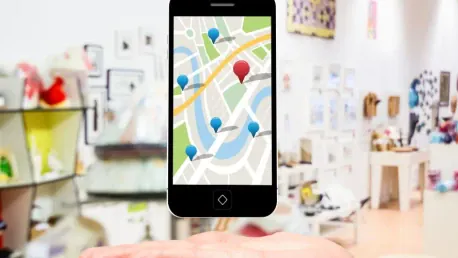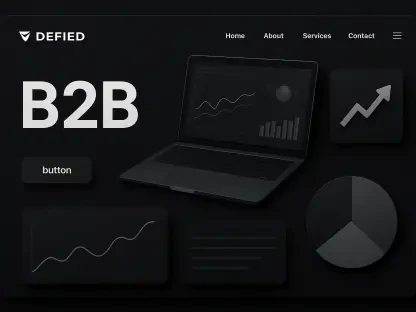Imagine walking down a busy city street and receiving a notification on your smartphone about a limited-time sale at a nearby store you frequent, instantly piquing your interest and guiding your decision on where to shop next. The powerful and precise ability of mobile devices to track users’ real-time locations has become an indispensable feature in today’s consumer behavior, seamlessly integrating into daily activities and decision-making processes. The increasing prominence of location-based mobile marketing has opened up a vast realm of opportunities for businesses to engage with customers in highly personalized and effective ways. An astounding 74% of adult smartphone users rely on their devices to obtain directions or location-based information, highlighting the immense potential of geolocation services in the market. As consumers shift from “checking in” at locations on social platforms like Foursquare or Facebook to seeking out invaluable, real-time information based on their current whereabouts, marketers are driven to deliver tailored content right when and where it is most relevant. This transition underscores the importance of delivering contextually relevant notifications and information, directly addressing customers’ immediate surroundings and needs.
The Rise of Geolocation Notifications
In the earlier stages of location-based marketing, retailers primarily relied on static in-store displays and promotional emails to attract customers. However, the evolution of geolocation notifications has taken customer engagement to a new level. By leveraging real-time, data-driven insights, businesses can now send dynamic mobile alerts to consumers, providing a seamless avenue to inform them about coupons, flash sales, or exclusive offers while they are on the go. Effective implementation of these alerts can significantly boost customer loyalty and interaction. For instance, Taco Bell’s successful “happy hour” campaign demonstrated the power of proximity alerts and reminders, effectively capturing the attention of nearby customers and driving them to participate in the promotion. Such campaigns prove the strategic advantage that well-timed, location-based notifications can offer, creating memorable and relevant experiences for consumers.
Moreover, the convenience and immediacy of receiving tailored notifications contribute to a more engaging and satisfying customer journey. By integrating real-time location data with consumers’ preferences and past behaviors, marketers can craft messages that resonate on a personal level, enhancing the overall shopping experience. This strategy not only fosters customer retention but also facilitates a sense of exclusivity and urgency, encouraging spontaneous purchases and visits to physical store locations. As technology continues to advance, the adoption of geolocation notifications will only grow, offering businesses a potent tool to maintain a competitive edge in the fast-paced retail environment.
The Competitive Edge of Geo-Conquesting
One of the more innovative approaches in location-based marketing is geo-conquesting, a strategy where businesses specifically target their competitors’ locations with their own offers. This tactic showcases the competitive advantage and strategic prowess of a well-executed location-based marketing campaign. By identifying and analyzing competitors’ strongholds, businesses can attract customers away with enticing offers and incentives, ultimately gaining a larger market share. Fast-food chains, such as McDonald’s and Burger King, have notably excelled in this area, harnessing the power of proximity marketing to lure customers from rival establishments. The competitive nature of geo-conquesting requires marketers to be highly strategic, ensuring their offers are not only compelling but also delivered at the right moment and place to influence potential customers’ decisions effectively.
In addition to attracting new customers, geo-conquesting can also reinforce brand presence and loyalty among existing clientele. By offering exclusive deals or discounts at targeted locations, businesses can remind loyal customers of the benefits of choosing their brand over competitors. This approach emphasizes the importance of a robust and adaptive marketing strategy, one that not only targets potential customers but also strengthens existing relationships. The precision and effectiveness of geo-conquesting make it an invaluable asset in the marketer’s toolkit, facilitating impactful interactions and higher conversion rates. As location-based marketing continues to evolve, the strategic implications of geo-conquesting will undoubtedly shape future marketing tactics, fostering a competitive landscape where innovation and consumer engagement are paramount.
The Untapped Potential of Geotargeted Data
Despite the substantial advantages of location-based marketing, there remains a notable gap in its adoption among retail marketers. Currently, only 23% of retail marketers utilize geotargeted data, highlighting a significant opportunity for brands to capitalize on this underused resource. By integrating geolocation technology into their marketing strategies, businesses can enhance customer engagement and drive sales more effectively. The untapped potential of geotargeted data lies in its ability to offer nuanced insights into consumer behavior and preferences, enabling marketers to craft highly personalized and timely messages. For brands, this means having the capability to deliver advertisements and promotions that are not only relevant to the user’s current location but also aligned with their specific interests and needs.
The integration of geotargeted data extends beyond mere promotional alerts. It encompasses a comprehensive approach to understanding consumer patterns, preferences, and behaviors, offering valuable insights that can inform future marketing strategies. For example, by analyzing location data, businesses can identify peak shopping times, preferred product categories, and frequent customer routes, allowing them to optimize store layouts, inventory, and targeted marketing efforts. This deeper understanding of consumer behavior fosters a more engaging and responsive customer experience, ultimately driving brand loyalty and revenue growth. The potential for growth in location-based marketing is immense, and businesses that harness the power of geotargeted data stand to gain a significant competitive advantage in today’s dynamic retail landscape.
Future Outlook and Strategic Recommendations
Picture strolling down a bustling city street when your smartphone pings with a notification about a limited-time sale at a nearby store you love. Immediately, your interest is piqued, and you’re guided on where to shop next. This precise ability of mobile devices to track real-time locations has now become essential in shaping consumer behavior, seamlessly weaving into our daily routines and decisions. The rise of location-based mobile marketing has unlocked vast opportunities for businesses to engage with customers in highly personalized and effective ways. A stunning 74% of adult smartphone users depend on their devices for directions or location-based information, showcasing the immense potential of geolocation services. As consumers move from simply “checking in” at locations on platforms like Foursquare or Facebook to actively seeking real-time data based on their current locales, marketers are compelled to provide tailored content precisely when and where it’s most relevant. This trend highlights the critical importance of delivering contextually relevant notifications and information, directly addressing users’ immediate surroundings and needs.









